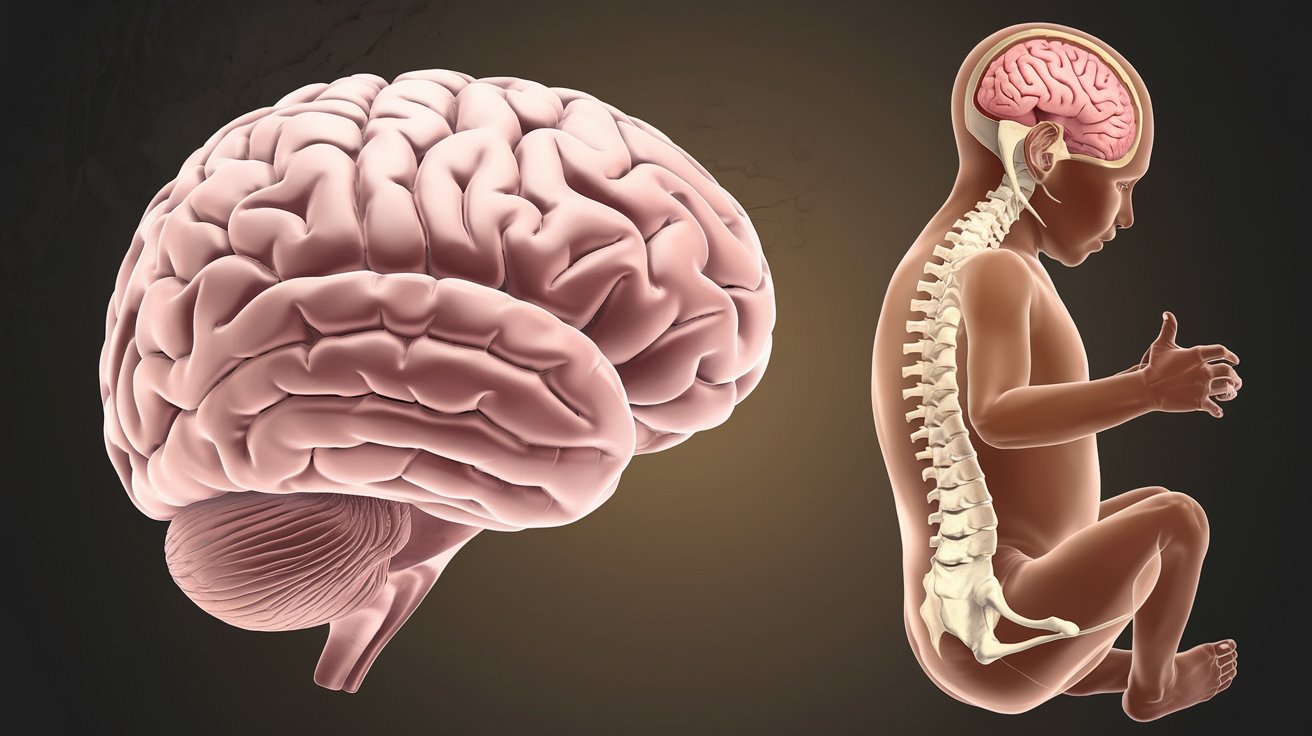
Holoprosencephaly Caudal Dysgenesis is a rare and complex condition that affects the development of the brain and spinal cord in unborn babies. This disorder occurs when the brain fails to divide properly into two hemispheres, often leading to severe facial deformities and neurological issues. Caudal dysgenesis involves abnormalities in the lower spine and limbs, sometimes resulting in fused legs or missing vertebrae. Understanding these conditions can be challenging, but knowing the facts can help. This article will provide 25 essential facts about Holoprosencephaly Caudal Dysgenesis, offering insights into its causes, symptoms, and potential treatments. Whether you're a parent, caregiver, or simply curious, these facts will shed light on this rare medical condition.
Key Takeaways:
- Holoprosencephaly is a rare brain malformation that can cause facial abnormalities and developmental delays. Genetic mutations and maternal diabetes are linked to this condition, which has no cure but can be managed with supportive care.
- Caudal dysgenesis affects the development of the lower spine and can lead to physical abnormalities like underdeveloped legs and bladder dysfunction. Early intervention and multidisciplinary care can improve outcomes for individuals with this rare disorder.
What is Holoprosencephaly?
Holoprosencephaly is a rare congenital brain malformation resulting from incomplete division of the forebrain during early embryonic development. This condition can vary in severity and often presents with facial abnormalities.
- Holoprosencephaly occurs in approximately 1 in 16,000 live births.
- The condition is classified into four types: alobar, semilobar, lobar, and middle interhemispheric variant (MIHV).
- Alobar holoprosencephaly is the most severe form, where the brain fails to divide into two hemispheres.
- Semilobar holoprosencephaly involves partial division of the brain into hemispheres.
- Lobar holoprosencephaly is the least severe form, with more distinct separation of the brain hemispheres.
- MIHV is a rare form where the middle part of the brain remains undivided.
- Genetic mutations, particularly in the SHH (Sonic Hedgehog) gene, are linked to holoprosencephaly.
- Environmental factors, such as maternal diabetes, can increase the risk of holoprosencephaly.
- Facial abnormalities associated with holoprosencephaly can include cyclopia (one eye), proboscis (tubular nose), and cleft lip/palate.
- The severity of facial abnormalities often correlates with the severity of brain malformation.
- Holoprosencephaly can lead to developmental delays, intellectual disabilities, and seizures.
- Prenatal diagnosis is possible through ultrasound and MRI imaging.
- There is no cure for holoprosencephaly, but supportive care can improve quality of life.
Understanding Caudal Dysgenesis
Caudal dysgenesis, also known as caudal regression syndrome, is a rare disorder affecting the development of the lower spine and spinal cord. This condition can lead to a range of physical abnormalities.
- Caudal dysgenesis occurs in approximately 1 in 25,000 live births.
- The condition is characterized by abnormal development of the lower spine, sacrum, and coccyx.
- Caudal dysgenesis can result in varying degrees of lower limb malformations, including clubfoot and underdeveloped legs.
- The condition is often associated with abnormalities in the genitourinary system, such as kidney malformations and bladder dysfunction.
- Caudal dysgenesis can also affect the gastrointestinal system, leading to issues like imperforate anus.
- Maternal diabetes is a significant risk factor for caudal dysgenesis.
- Genetic factors may also play a role in the development of caudal dysgenesis.
- Diagnosis is typically made through prenatal ultrasound and postnatal imaging studies.
- Treatment focuses on managing symptoms and may include surgical interventions, physical therapy, and assistive devices.
- Early intervention and multidisciplinary care can improve outcomes for individuals with caudal dysgenesis.
- The severity of caudal dysgenesis can vary widely, with some individuals experiencing mild symptoms and others facing significant challenges.
- Research is ongoing to better understand the genetic and environmental factors contributing to caudal dysgenesis.
Final Thoughts on Holoprosencephaly Caudal Dysgenesis
Holoprosencephaly Caudal Dysgenesis, a rare congenital disorder, affects brain development and the lower spine. Understanding its complexities helps in early diagnosis and better care. Genetic factors play a significant role, though environmental influences can't be ignored. Symptoms vary widely, from mild facial abnormalities to severe neurological impairments. Early intervention and supportive therapies can improve quality of life for those affected. Awareness and research are crucial for advancements in treatment and support. Families dealing with this condition need comprehensive medical guidance and emotional support. Holoprosencephaly Caudal Dysgenesis remains a challenging medical condition, but ongoing research offers hope for better management and outcomes. Sharing knowledge about this disorder can foster a supportive community and drive further scientific discoveries. Let's continue to learn and support those impacted by this rare condition.
Frequently Asked Questions
Was this page helpful?
Our commitment to delivering trustworthy and engaging content is at the heart of what we do. Each fact on our site is contributed by real users like you, bringing a wealth of diverse insights and information. To ensure the highest standards of accuracy and reliability, our dedicated editors meticulously review each submission. This process guarantees that the facts we share are not only fascinating but also credible. Trust in our commitment to quality and authenticity as you explore and learn with us.
